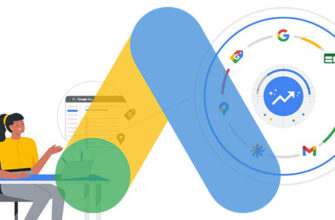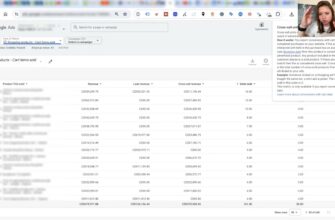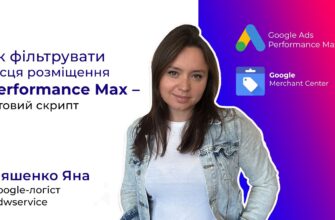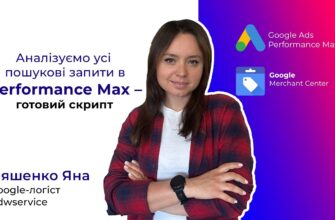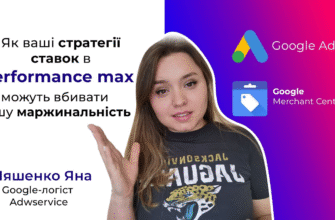- Main characteristics of the presented case
- Problem on Shopify – conversions are not recorded correctly
- The need to target the correct audience
- Launching Performance Max and difficulties in its operation
- Why is it important to correctly record conversions in performance
- Why install a dynamic remarketing tracking code
- Some payment systems are not correctly recorded by the traffic source
- How to analyze conversion rate
- Comparison with indicators before the start of client support
- Results
Hello everyone. My name is Yana Lyashenko, Google logistics specialist. I am engaged in delivering to the target audience with the necessary parameters. I help businesses scale their online sales using Google advertising tools.
Main characteristics of the presented case
In today’s video I will show one of the cases. Plus, I’ll tell you the difficulties that you may encounter in such a niche, and sales are not so easy. What do we have? We have an online store selling fresh flowers. There are ready-made bouquets. The task is to advertise, we have a US market. I won’t name the specific city. We have chosen a city, let’s say, we show analytics for 7 days in comparison with the previous seven days, not much, roughly expenses and, accordingly, sales.
Tax, what is the approximate plus or minus result? I want to show the period from December 22 to 28. This is here… Well, you can see the expenditure side in dollars. Nine Purchase sales, which the analytics recorded.
How many calls and sales will I get by ordering contextual advertising from you?
I need to calculate the conversion of my website Describe
the task
in the application
Calculate potential ad revenue Google
contextual advertising calculator
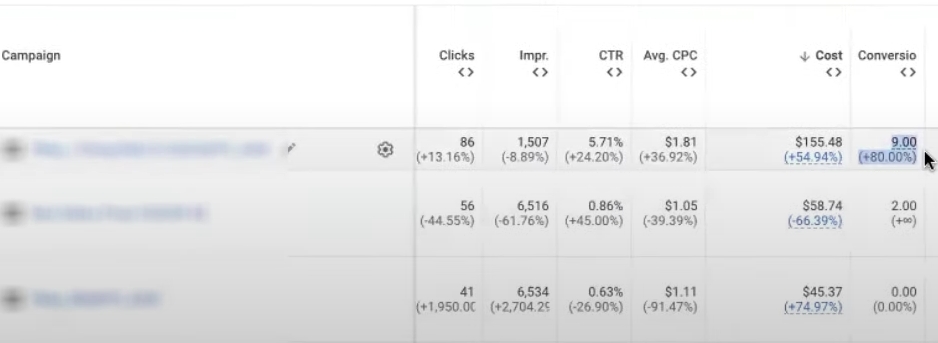
I will focus on this in the future, since this is the Shopify platform, it has certain nuances in setting it up for personal advertising, for Google advertising. Well, and accordingly the cost per conversion. This is an advertising campaign. 17.28 can be seen here. There is also additional profitability obtained from two campaigns. Taking into account the $30 cost per conversion, the profitability is 6.07, 607% directly.
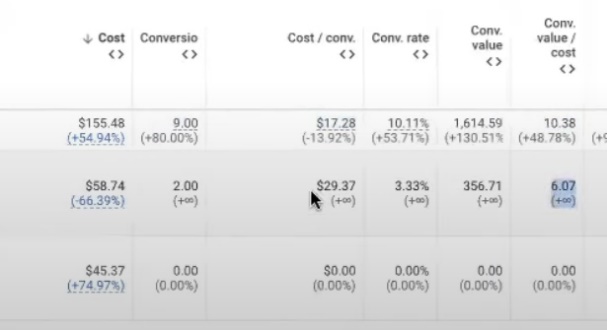
Tax, this is a small result. There is also a test advertising campaign. What would you like to say in this case?
Problem on Shopify – conversions are not recorded correctly
Problems that we encounter in the process of launching such stores and especially on the Shopify platform. The first is the correct, correct recording of all conversions. Unfortunately, Shopify, although the most popular e-commerce platform, has shortcomings in terms of correct operation from an analytics point of view. This directly concerns the accuracy and correctness of recording conversions.
Possibly for various reasons. There is some kind of upsell page on the final pages or some payment systems that do not redirect the client back. Or when a client is redirected, another traffic source or channel is overwritten. Well, in short, it doesn’t matter. The main problem of Shopify stores, regardless of the niche, is that many conversions fall in direct messages. If you open a Shopify store and open the report on order sources, you will certainly see direct as the largest in terms of traffic volume and conversion volume. Not really. Not a direct approach. This is possibly a paid channel and others. One of the biggest difficulties of launching advertising on Shopify is the most difficult for any specialist to cope with, since they simply do not see relevant analytics. OK. The specialist does not see this analytics. So what? An option is to roughly navigate the volume of orders. No.
The need to target the correct audience
The second difficulty of selling such products is that it is especially important to target the correct audience. The task is not shown simply for the requests “flower delivery” or “florist near me” or some other request. No. It is important to catch a person at the right moment.
There are people who are simply asking the price and will start buying flowers for some holiday. There are those that are already burning with them or are already ripe for purchase, but they simply choose where. What does this affect? The cost per conversion is dramatically affected. Receive a cost per conversion of $150 or 20 or 15. This is important.
Launching Performance Max and difficulties in its operation
For this purpose, you can launch only one effective advertising channel, although I don’t particularly like it, this is Performance Max. Performance Max is a new type of advertising campaign that combines all types of advertising campaigns. For flowers, we launch both without objects and with campaign objects. This is for specialists if they are interested.
What is the difficulty of this Performance Max? It uses artificial intelligence for targeting. What does it mean to use artificial intelligence? This means that the system needs to obtain information about behavior on the site. Because there is a desire not just to receive some purchases. Right? Do you want to receive it at some price? It’s more expensive here, since you can get it in reality.
I’ll tell you what difficulties we encountered in the project. Maybe 80, 90 dollars per conversion price for some of the projects in similar niches. Is this correct? You don’t want to just waste money. Right? Do you want to make money from this? To make money, you need to limit your campaigns. Give additional signals to Google artificial intelligence, please, thousands of people can buy, but with certain criteria.
In order to find them, he needs to provide this analytics of the client’s behavior on the site. It seems completely unimportant, that is, a person came in, entered “I want to buy a bouquet of red roses,” 100 pieces, 200 pieces or whatever, or a bouquet of peonies, or some other daisies, conditionally. Everything looks like I bought it. No guys. Before he actually starts buying, he has a huge, multi-volume list of pre-purchase behavior, and artificial intelligence will take all this into account.
The problem with history is that there are enough people in the States who are similar in their behavior patterns. But some of them will not fit into those values, say, sales prices, whatever you want, or payback, or something else.
How many calls and sales will I get by ordering contextual advertising from you?
I need to calculate the conversion of my website Describe
the task
in the application
Calculate potential ad revenue Google
contextual advertising calculator
Why is it important to correctly record conversions in performance
If you want to sell expensive bouquets, they are cheap, etc. To adjust for artificial intelligence, it is fundamentally important for it to receive the entire set of data on user behavior on the site, including conversions. When incorrect sources of conversion are recorded on Shopify or not all conversions fall, the Google Ads advertising account is not a small signal that the performance will not cope, it is difficult to scale this artificial intelligence, but that it will simply begin to change targeting. How does artificial intelligence think? There is some kind of software model that predicts how a person should conduct e-commerce on the Internet. There is a niche, and there is behavior on the site. Takes product items, leads to the site, leads, leads. People get to the site, but nothing happens. They don’t buy the product. Artificial intelligence does what? Yes. OK. This means that the audience that buys in others does not buy here. So she doesn’t fit. I will take the traffic to a completely different direction. Right. Well, that seems to be it. Logical.
The nuance in translation, changing the direction vector in finding an audience is the biggest problem when supporting Performance Maxes. Because in other competitors traffic keeps buying and buying. But the system does not simply see purchase conversions. Doesn’t see the client’s behavior on the site. Changes direction. You disappear from the target audience targeting monitor. This is why it is important to correctly record conversions on all platforms and websites and enter this analytics directly into your Google Ads advertising account. This is important.
Why install a dynamic remarketing tracking code
Another difficulty, which we often encounter on Shopify platforms, is that you do not set tracking codes for dynamic remarketing. Dynamic remarketing provides a whole range of performance benefits. Two main, basic ones – he sees more carefully what is happening with the goods on the site, and operates using product analytics.
And one more thing. Can use this analytics for targeting. Dynamic remarketing usually, if you read about it, is supposedly an advertisement that can chase you if you viewed certain products. In the performance this was brought to a more advanced format. If similar products were previously Googled by competitors, then without a person visiting the product on the site, using the dynamic remarketing functionality, it can slip results to a competitor on a site where there was already a potential customer.
Cool? Yes? But on Shopify, as usual, not all functionality is fixed and dynamic remarketing is often simply forgotten. Fundamentally important. This is the difficulty. Difficulties encountered specifically on the project. For some reason, their own security system did not allow Shopify access to correct the codes that recorded this directly.
This adds complexity. She said that potentially the cost per conversion should be cheaper. It cannot be made cheaper. We teach performance data to be guided simply by events, by some events, without per-product analytics. This is kind of a minus. This adds more instability to performances and cannot be smoothly increased in conversions. At a certain point, they will either stop converting or the cost per conversion will increase, etc. Well, that’s the story. I think that after the New Year we will try to fix the whole block with the client.
Some payment systems are not correctly recorded by the traffic source
Another difficulty is that some of the payment systems, such as Shopify payments, for some reason are not correctly recorded by the source, the traffic channel directly on Shopify. This is their own payment system, but it does not correctly determine the source of traffic. She either changes it completely or rewrites it to some completely direct one. The problem is because of this – part of the performance works with the same Google objects, adequately operates with the same KMS, search.
The cost per conversion is much cheaper here than in classic search or Display Network. Product advertising is not effective enough for the same reason that we cannot provide adequate analytics to artificial intelligence about which products need to be prioritized in the search results, which products work better. The difficulty with selling impulse goods, non-essential items, is that people usually go to the site and they browse through some goods. They may visit some white flowers. As a result, they will buy some peonies. The performance could have seen this analytics if there had been a block on access to the site code, which could have been corrected. Well, that’s not what we’re talking about today, conditionally.
How to analyze conversion rate
If you look, this period of complexity with some iterations of edits is constantly happening. An example of the result in literally a week, when, plus or minus, everything is more or less stable in advertising campaigns. The cost per conversion has increased. New campaign test with new signals. The conversion is quite good.

Always pay attention to the conversion rate when it is below one. The traffic is not of particularly high quality or is too wide. No longer quality, perhaps absolutely targeted, but unfortunately too broad, or nuance in assessing the effectiveness of performances can be tracked. Well 1.5%. Plus or minus perfect. Well, and profitability accordingly. A little shopping. Not much, since it’s a small advertising expense per day. Plus, it adds something that is difficult to scale in conditions when December is already ending. Plus there is an added nuance – not all analytics are provided to Performance Max. Well, you can roughly count on this result.

Comparison with indicators before the start of client support
What happened before, if you show it, since it’s not a clean launch week. This is a whole block of work carried out in recording complications that exist for the entire period under review. There are advertising campaigns that ended up converting at a high price, some that became cheaper, and some that were turned off, as you can see here. Steels become ineffective over time. There are tests that didn’t work, etc. A whole range of work was carried out on the account in order to simply have a similar set of conversions in 7 days, at such and such a cost, with a similar profitability, payback.
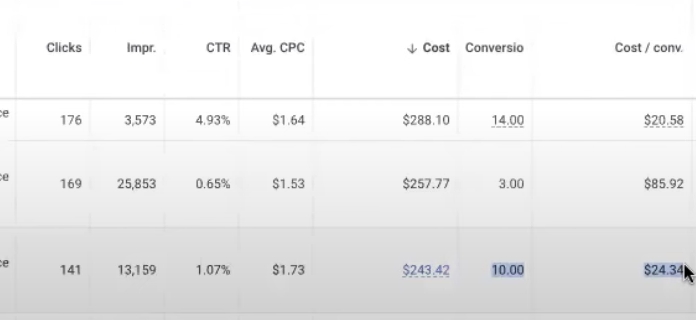
Results
Just launching an advertising campaign won’t really help here. A set of signals, alterations, edits and other things are needed to simply bring advertising campaigns to some kind of ratio. The goal was profitability.
I would like to demonstrate such an example of a case today.







